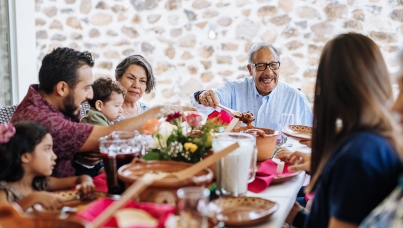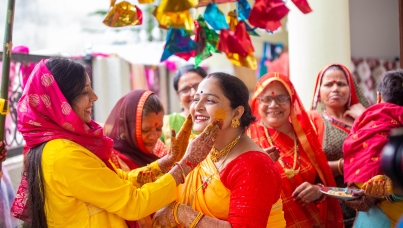4 in 10 Indians want complete ban on Marijuana, Tobacco, Vaping, Online Betting, Violent Games: Ipsos Vices Global Study
New Delhi, May 07, 2019: Ipsos Global Study on Vices shows that Indians are quite clear about what products and services, according to them, fall under the purview of Vices and their views are quite fixed about that. Some products and habits for instance they feel should not be accessible to anyone (overriding view) – Tobacco/ cigarettes (44%), Marijuana (42%), e-cigarettes/ Vaping (42%), Violent Video Games (40%) Online Betting/ gambling (39%) or available to adults. While some products should be accessible only to adults – Wine, beer, liquor and online dating services, there are some products which have universal acceptance – among children and older age-groups – Chocolates, packaged salty snacks and sugary soft drinks.
“Vices are largely defined by social taboo and the survey validates, what is socially acceptable and what is not. And the rules of the game are not likely to change,” says Parijat Chakraborty, Service Line Leader, Ipsos Public Affairs, Corporate Reputation & Customer Experience.
Vices – who should be accessing what? Verdict of Urban Indians
|
|
Anyone including children |
Anyone aged 13 or older |
Anyone aged 18 or older |
Anyone aged 21 or older |
Only people who have been delivered permit/ permission |
No one what so ever |
Not sure |
|
Wine |
3% |
3% |
16% |
36% |
13% |
18% |
11% |
|
Beer |
2% |
4% |
21% |
35% |
11% |
18% |
9% |
|
Liquor |
2% |
3% |
14% |
34% |
13% |
24% |
10% |
|
Access to violent video games |
3% |
6% |
12% |
16% |
9% |
40% |
13% |
|
Access to chocolate |
60% |
12% |
8% |
9% |
6% |
2% |
3% |
|
Access to social media |
9% |
19% |
31% |
23% |
8% |
5% |
4% |
|
Access to packaged salty snacks |
34% |
20% |
10% |
13% |
7% |
9% |
7% |
|
Access to sugary soft drinks |
21% |
19% |
14% |
14% |
10% |
14% |
9% |
|
Access to casino gambling |
2% |
2% |
8% |
22% |
17% |
35% |
14% |
|
Access to online dating services |
3% |
4% |
18% |
35% |
9% |
20% |
11% |
|
Access to pornography |
3% |
4% |
15% |
23% |
8% |
34% |
13% |
|
Access to Cannabis/ Marijuana |
3% |
3% |
6% |
15% |
10% |
42% |
20% |
|
Access to tobacco, cigarettes & cigars |
2% |
3% |
9% |
20% |
9% |
44% |
13% |
|
Access to e-cigarettes/ Vaping |
2% |
2% |
7% |
18% |
12% |
42% |
16% |
|
Access to Online Betting & Gambling |
2% |
2% |
8% |
21% |
13% |
39% |
14% |
The survey further delved into the psyche of Urban Indians to understand which of these ‘so-called’ Vices are morally acceptable in moderation.
Clearly, it is a mixed bag – some vices are largely acceptable, some unacceptable and some have divided views. 75% Indians say chocolates are morally acceptable in moderation, 68% endorse Social Media in moderation, 62% OK with consumption of Packaged Salty Snacks in moderation, 57% urban Indians approve of intake of Sugary Soft Drinks in moderation. What is unacceptable? Tobacco/ cigarettes & cigars (62%), Marijuana/ Cannabis (62%), Casino gambling (59%), Online betting & gambling (59%), e-Cigarettes/ vaping (57%) and Pornography (54%). Views were divided for consumption of Beer, Wine, liquor and Online dating services.
Morally Acceptable in Moderation?
|
|
Agree |
Neither agree nor disagree |
Disagree |
|
Wine |
41% |
25% |
34% |
|
Beer |
44% |
19% |
32% |
|
Liquor |
31% |
25% |
44% |
|
Violent video games |
20% |
22% |
58% |
|
Chocolate |
75% |
15% |
10% |
|
Social Media |
68% |
21% |
11% |
|
Packaged salty snacks |
62% |
22% |
16% |
|
Sugary soft drinks |
57% |
23% |
21% |
|
Casino Gambling |
22% |
19% |
59% |
|
Online Dating Services |
38% |
26% |
36% |
|
Pornography |
25% |
21% |
54% |
|
Cannabis/ Marijuana |
18% |
20% |
62% |
|
Tobacco/ cigarettes/ cigar |
19% |
19% |
62% |
|
e-Cigarettes/ Vaping |
20% |
23% |
57% |
|
Online betting & Gambling |
21% |
21% |
58% |
Player Unknown’s Battlegrounds (PUBG) – popular video game, is a vice too
Monica Gangwani, Country Service Line Head, Ipsos Healthcare (HEC) India,
says, “Moderation is the watchword even for chocolates, salty snacks and sugary soft drinks. While people enjoy them, over consumption can lead to adverse impact on health, in terms of obesity, blood pressure and diabetes.”
“Some of the popular violent video games have been banned in India. And our survey validates that most Indians reject them, as they are interpreted as vices,” adds Chakraborty.
Legalization of Marijuana
How is Marijuana perceived among Indians? Only 36% Indians feel that Marijuana has medicinal value (29% disagreed and 35% were undecided); only about 39% Indians agree that Marijuana should be legal for medical usage (35% disagreed, while 26% were undecided); 24% endorse legalization of Marijuana for recreational usage (50% disagreed and 26% were undecided).
Reservations towards adoption of Marijuana are understandable – 58% urban Indians feel it is addictive (22% disagreed, while 21% were undecided).
Interestingly, 39% Indians say that if Marijuana was legally available for medical purposes they would take it under doctor’s prescription (35% disagreed and 27% were undecided). And if Marijuana was legally available for recreational purposes? Only 23% say they would try it (a whopping 53% would not and 24% said they were undecided).
How would the scenario be 10 years hence for Marijuana and other stuff?
41% Indians feel that Marijuana will be legally available for medical use (28% disagreed and 31% were undecided). 27% Indians feel that Marijuana will be legally available for recreational purpose (39% disagree, 34% were undecided).
“Marijuana has many potential harmful short- and long-term effects on the body. It is a drug that has huge potential for misuse and its negative effects far outweigh its potential medicinal benefits. In a country like India, where drugs are dispensed easily by the chemists (even without prescriptions at times), it would definitely be a big risk, to relax norms on this drug. In my view, it should not be legalised,” cautions Gangwani.
“There are several safer and more effective alternatives to medical Marijuana, and physicians should consider those approaches for treatment.”
45% Indians feel that usage of e-cigarettes and vaping devices will surge (27% disagreed and 28% were undecided).
62% Indians feel that consumption of beer, wine and liquor will be higher (19% disagreed, while 19% were undecided).
52% Indians feel that usage of illegal drugs will go up (26% disagreed, 22% were undecided).
61% Indians predict that 10 years from now, consumers would be spoilt for choice with the variety of hard drinks – whether beer, liquor or wine (19% disagreed, 20% were undecided).
Methodology
The findings come from surveys conducted between November 26 and December 7, 2018 on the Ipsos global advisor platform using the Ipsos online panel system with 18,638 adults across 29 countries: Argentina, Australia, Belgium, Brazil, Canada, Chile, China, Colombia, France, Germany, Great Britain, Hungary, India, Italy, Japan, Malaysia, Mexico, Peru, Poland, Romania, Russia, Saudi Arabia, Serbia, South Africa, South Korea, Spain, Sweden, Turkey, and the U.S.
All survey respondents are aged 18-64 in Canada and the U.S. and 16-64 in all other countries.
The sample size per country in each survey is approximately n=1,000 for Australia, Brazil, Canada, China, France, Germany, Great Britain, India, Italy, Japan, Spain, and the U.S. And approximately N=500 for Argentina, Belgium, Chile, Colombia, Hungary, Malaysia, Mexico, Peru, Poland, Romania, Russia, Saudi Arabia, Serbia, South Africa, South Korea, Sweden, and Turkey.
Weighting has been employed to balance demographics and ensure that the sample’s composition reflects that of the adult population according to the most recent country census data.
A survey with an unweighted probability sample of this size would have an estimated margin of error of +/- 3.5 percentage points for a sample of 1,000 and an estimated margin of error of +/- 5.0 percentage points for a 500 sample 19 times out of 20.
In 17 of the countries surveyed, internet penetration is sufficiently high to think of the samples as representative of the national population within the age ranges covered: Argentina, Australia, Belgium, Canada, France, Germany, Hungary, Italy, Japan, Poland, Serbia, South Korea, Spain, Sweden, Great Britain, and the U.S.
Brazil, Chile, China, Colombia, India, Malaysia, Mexico, Romania, Russia, Peru, Saudi Arabia, South Africa, and Turkey have lower levels of internet penetration. Samples from those countries should not be fully nationally representative, but instead to represent a more affluent, connected population, representing an important and emerging middle class.
Results may not always sum to 100% or may be 1 point higher/lower than the actuals due to rounding, multiple responses or the exclusion of don't knows or not stated responses.



